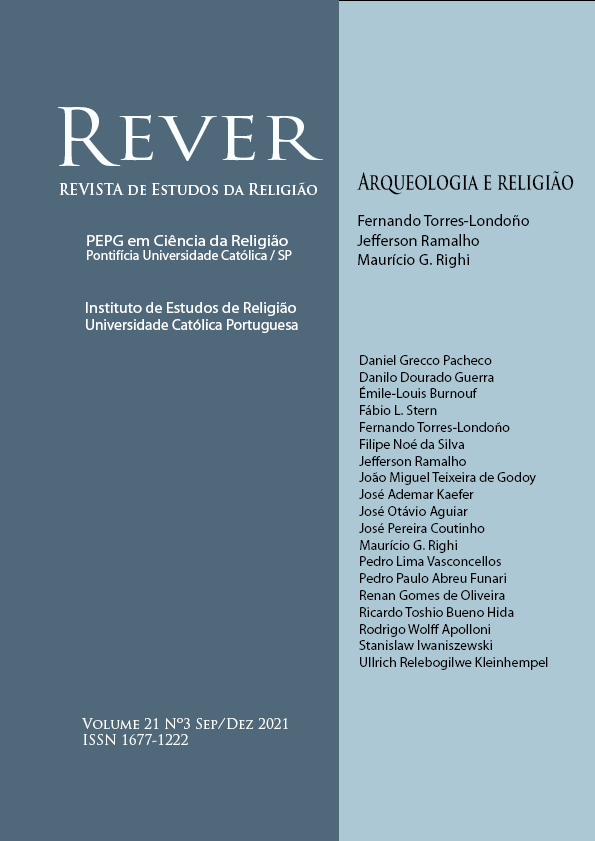A reading hypothesis to the martial narrative about the 1736’s “Shaolin monastery destruction”
DOI:
https://doi.org/10.23925/1677-1222.2021vol21i3a10Keywords:
Buddhism, Shaolin Monastery, Shaolin, Fighting Monks, Kung Fu, Shaolin Kung FuAbstract
Founded in 495 CE in Henan Province, Shaolin Buddhist Monastery is famous as one of the ch’an (zen) Buddhist birthplaces in China. More than that, is worldwide famous for its warrior monks, who inhabiting Chinese imagination since the 16th century and have connections with “Shaolin kung fu”, admired and practiced in many countries. The history and legends of these religious characters reached the western public just over 50 years ago, when “Kung fu Crazy” began – a media movement that inspired the practice of Chinese martial art on a global scale. In this article, we examine the destructions that Shaolin Monastery suffered along 1.500 years of history, more exactly in the Sui-Tang, Yuan-Ming, Ming-Qing transition periods and at the first Chinese republican era. Our mainly spot, however, lies in the historicity of a narrative present in Chinese and occidental Kung fu traditions: the “1736 destruction” of Shaolin monastery by Qing imperial troops. In looking for its roots, we note that they seem to point to both a historical episode and an important legend in the anti-Qing context of the 18th century.
References
ACADEMIA SINO-BRASILEIRA DE KUNG FU, Kung Fu – versão curta de uma história muito longa, ed. única, 1998.
APOLLONI, Rodrigo Wolff. O Dharma das Armas: origem e significados da iconografia marcial encontrada no Budismo. In: REVER (PUC-SP), ano 13, N. 02, jul/dez 2013. Disponível em: https://bit.ly/2RMkTn0. Acesso em 19.04.21.
CHINA.ORG. 1950: The Land Reform. In: China.org, 15.09.09. Disponível em: https://on.china.cn/3a3noYi. Acesso em 11.04.21.
CHINA'S Shaolin Temple builds business empire. In: The Independent, 11.01.11. Disponível em: https://bit.ly/3dCs8pP. Acesso em 21.04.21.
ELLIOTT, Mark. Emperor Qianlong, Son of Heaven, Man of the World, 1ª ed., Londres: Pearson, 2009.
ESHERICK, Joseph. The Origins of the Boxing Uprising, 1ª ed., Berkeley: University of California Press, 1987.
FASSI, Roberto. Enciclopedia del Kung Fu Shaolin, V. 1°, Roma: Edizioni Mediterranee, 1986.
GLICK, Carl, e HONG, Sheng-Hwa. Swords of Silence – Chinese Secret Societies – Past and Present, 1ª ed., Nova Iorque: McGraw-Hill Book Company, 1947 p.
HENAN BUSINESS DAILY. Templo de Shaolin reabre para não mais de 22 mil pessoas por dia; turistas devem reservar ingressos em seus próprios nomes (少林寺重新开放,日接待不超过22000人,游客需实名预约购票), In: Henan Business Daily (河南商报) em 22.06.20. Disponível em: https://bit.ly/3eevUov. Acesso em 19.04.21.
HOBSBAWM, Eric. Pessoas Extraordinárias. Resistência, Rebelião, 1ª ed., São Paulo: Paz e Terra, 2009.
HOBSBAWM, Eric. A invenção das tradições, 12ª ed., São Paulo: Paz e Terra, 2012.
KEONG, Chen-hung. Land Reform in China (1911-1953). 1967. Tese (Master of Arts) apresentada à Universidade do Tennesee, 108 p., pp. 69-86. Disponível em: https://bit.ly/2QjUrA8. Acesso em 11.04.21.
LORGE, Peter. Chinese Martial Arts – From Antiquity to the Twenty-First Century, 1ª ed., Cambridge: Cambridge University Press, 2012.
LU, Zhouxiang. A History of Shaolin – Buddhism, Kung Fu and Identity, 1ª ed., Nova Iorque: Routledge – “Routledge Research in Sport, Culture and Society”, 2020.
LU, Zhouxiang. Politics and Identity in Chinese Martial Arts, 1ª ed., Nova Iorque: Routledge – “Routledge Research in Sport, Culture and Society”, 2018.
MEYERS, Richard, et. al. From Bruce Lee to the Ninjas – Martial Arts Movies, 1ª ed., Nova Iorque: Carol Publishing Group, 1991.
MCCORD, Edward. Civil War and the Emergence of Warlordism in Early Twentieth Century China”, in War & Society, 1992, 10:2, pp. 35-56.
MOSTEIRO DE SHAOLIN, site oficial, Introdução ao Grupo de Monges Guerreiros ("武僧团介绍", Wǔ sēng tuán jièshào). Disponível em: https://bit.ly/3eqdYrn. Acesso em 09.04.21.
MURRAY, Dian. The Origins of the Tiandihui – The Chinese Triads in Legend and History, 1ª ed., Stanford: Stanford University Press, 1994.
NARRATIVA DE 1736, versão da “Federazione Italiana Kung Fu”. Disponível em: https://bit.ly/3a7OIEN. Acesso em 12.04.21.
NARRATIVA DE 1736, versão da Ecole de Wushu d'Amboise. Disponível em: https://bit.ly/328S5H7. Acesso em 12.04.21.
PING, Li. Rural land tenure reforms in China: issues, regulations and prospects for additional reform, in GROPPO, P. (Ed.), In Land Reform, 2003/3, publicação da FAO, 2003. Disponível em: https://bit.ly/3s9OLWS. Acesso em 11.04.21.
SHAHAR, Meir. Crazy Ji – Chinese Religion & Popular Literature, 1ª ed., Harvard: Harvard University Press, 1999.
SHAHAR, Meir. O Mosteiro de Shaolin – história, religião e as artes marciais chinesas, 1ª ed., São Paulo: Perspectiva, 2011.
SHAOLIN Monastery. In Chinese Buddhism Enciclopedia, art. Disponível em: https://bit.ly/3au9Vsy. Acesso em 21.04.21.
SHI DE CHENG, biografia disp. . Disponível em: https://bit.ly/3xktkpE. Acesso em 08.04.21.
SILVA, Juremir. O Imaginário é uma realidade, entrevista de Michel Maffesoli, in Revista FAMECOS, Porto Alegre, nº 15, agosto 2001, pp. 74-82. Disponível em: https://bit.ly/3pyPOhQ. Acesso em 27.01.21.
SPENCE, Jonathan. O filho chinês de Deus, 1ª ed., São Paulo: Companhia das Letras, 1998.
STRAUSS, Valerie. How many died? New evidence suggests far higher numbers for the victims of Mao Zedong's era, in The Washington Post, 17.07.1994. Disponível em: https://wapo.st/3a3onrs. Acesso em 11.04.21.
TAN, Jun. “O templo de Shaolin no monte Song, que acusa Semir de violação, registrou 666 marcas comerciais” (“斥责森马侵权的嵩山少林寺 注册了666个商标”), in Sina, artigo publicado em 17.09.20. Disponível em: https://bit.ly/3v3ZtzW. Acesso em 19.04.21.
TAYLOR, Jay. The Generalissimo – Chiang Kai-Shek and the Struggle for Modern China, 1ª ed., Londres: The Belknap of Harvard University Press, 2009.
THE INDEPENDENT, “China's Shaolin Temple builds business empire”, art. publ. In The Independent in 11.01.11. . Disponível em: https://bit.ly/3dCs8pP. Acesso em 21.04.21.
TER HAAR, Barend. Ritual & Mythology of the Chinese Triads, 1ª ed., Leiden: Brill´s Scholars List, 1997.
Downloads
Published
Issue
Section
License

This work is licensed under a Creative Commons Attribution-NonCommercial 4.0 International License.
Authors who publish in this journal agree with the following terms:- Authors retain copyright, but grant the journal the right of first publication, with the work simultaneously licensed under the Creative Commons BY-NC License.
- Authors are authorized to assume additional contracts separately, for non-exclusive distribution of the work published in this journal (e.g., publishing in an institutional repository or as a book chapter), as long as with acknowledgment of authorship and first publication in this journal.


